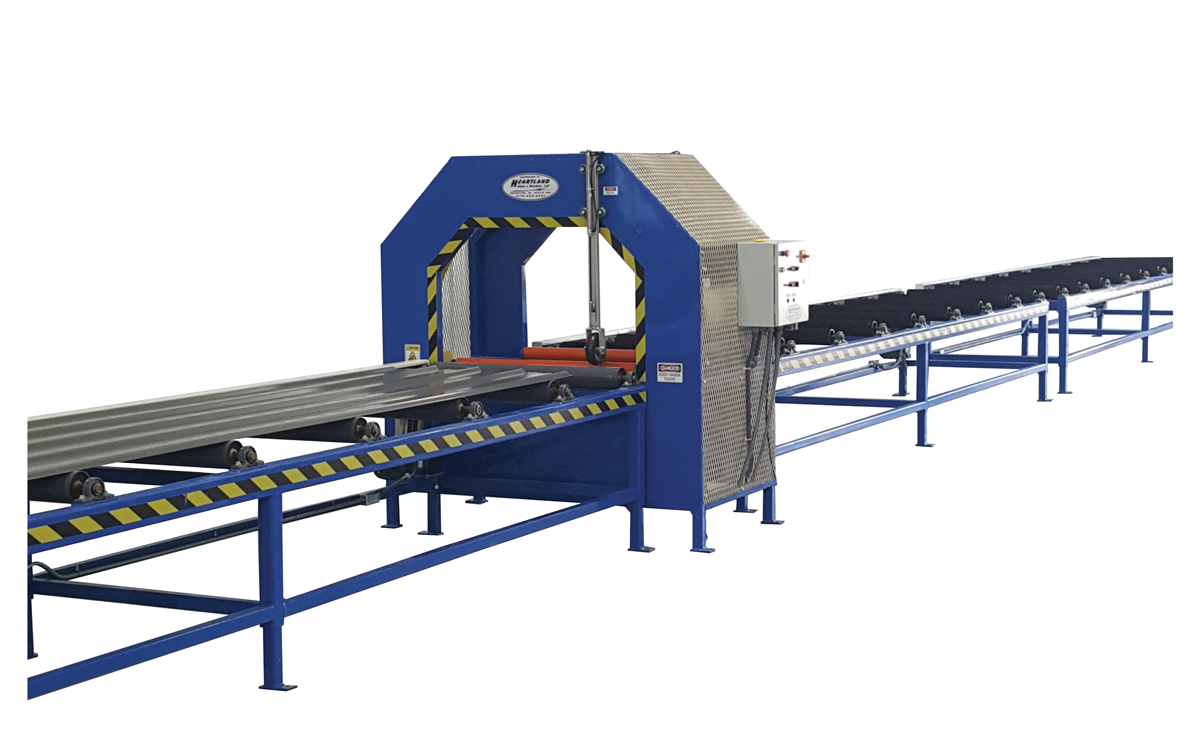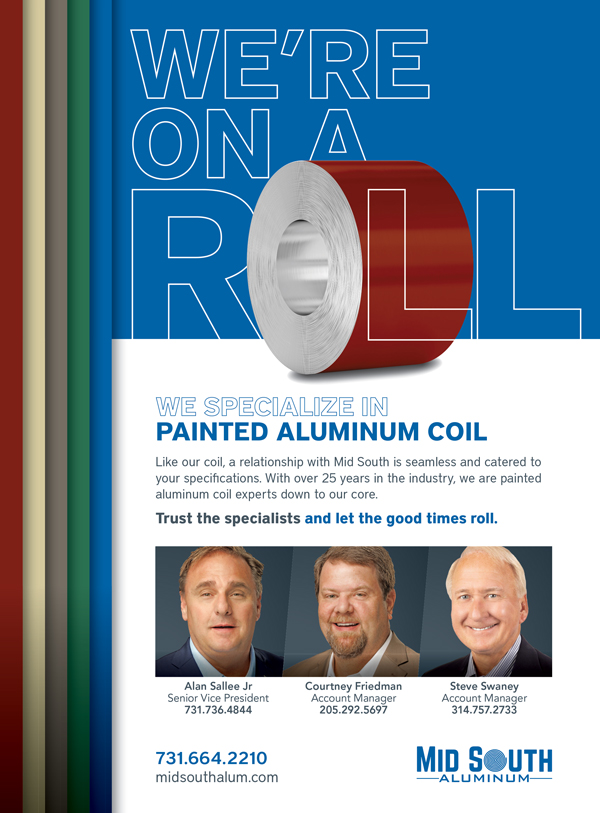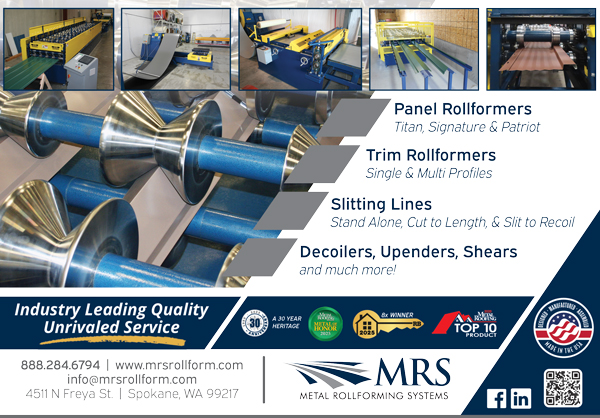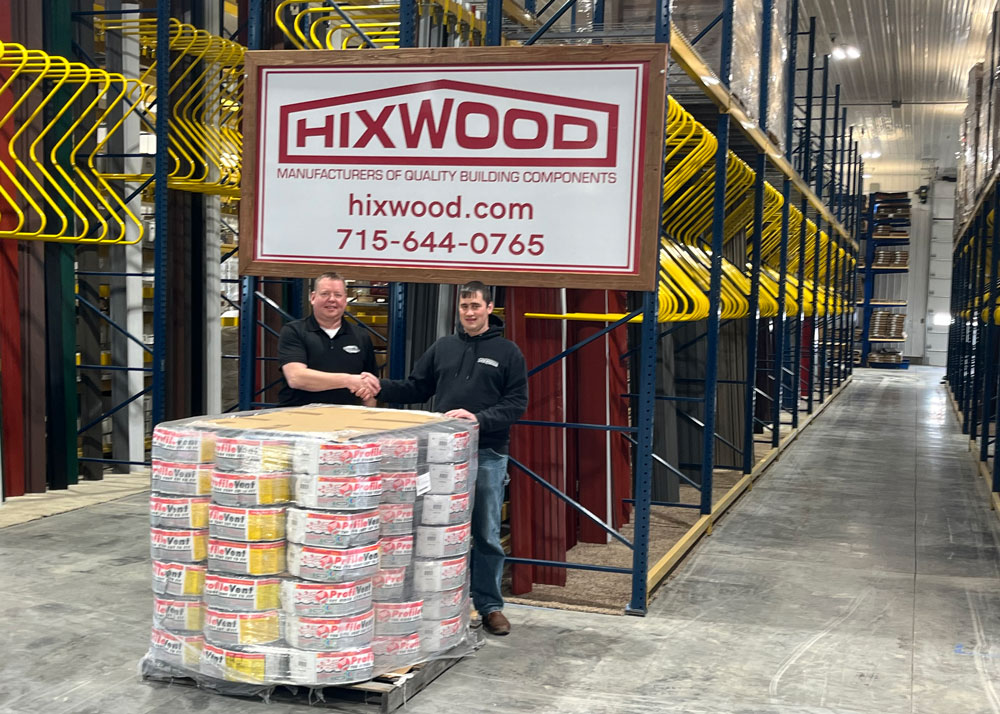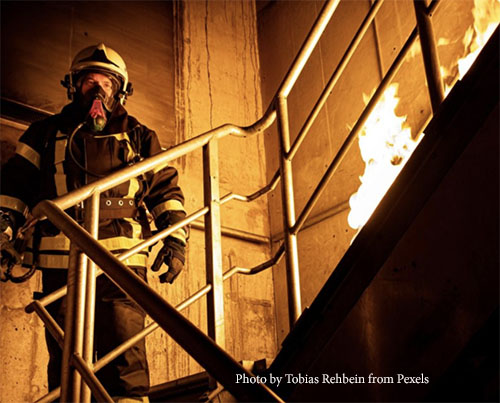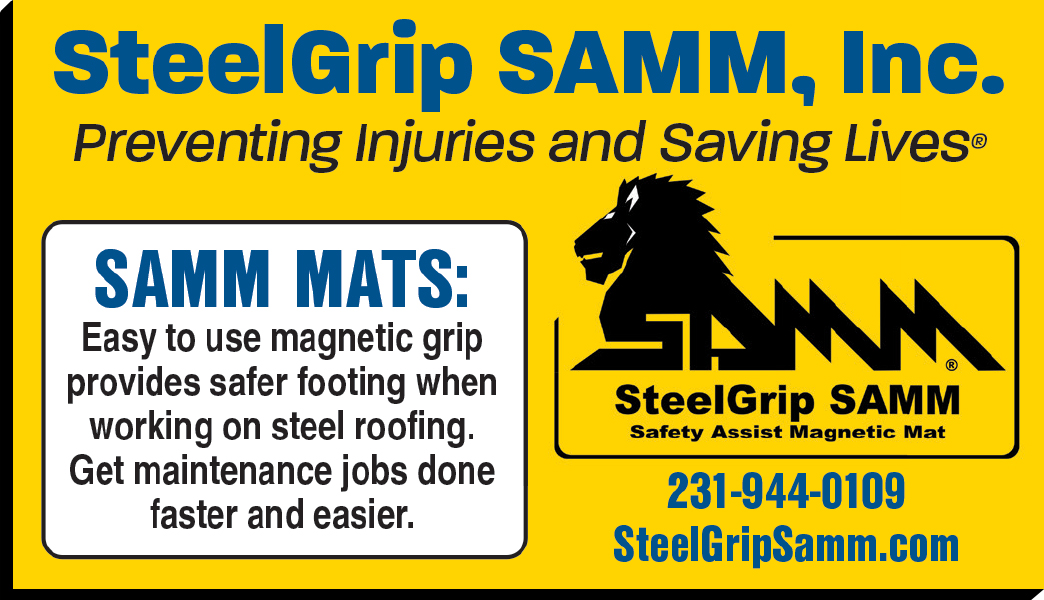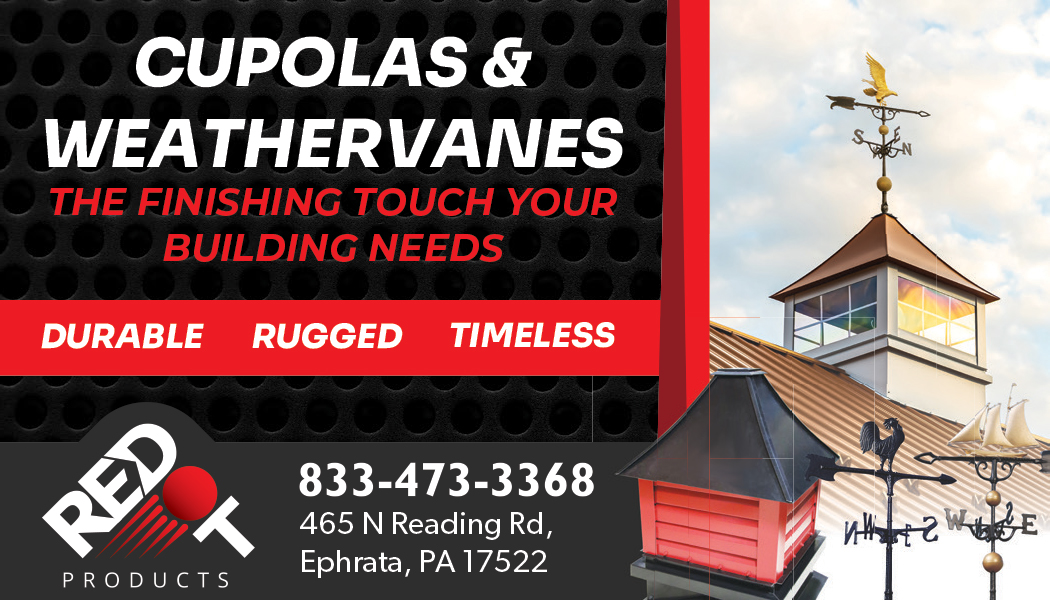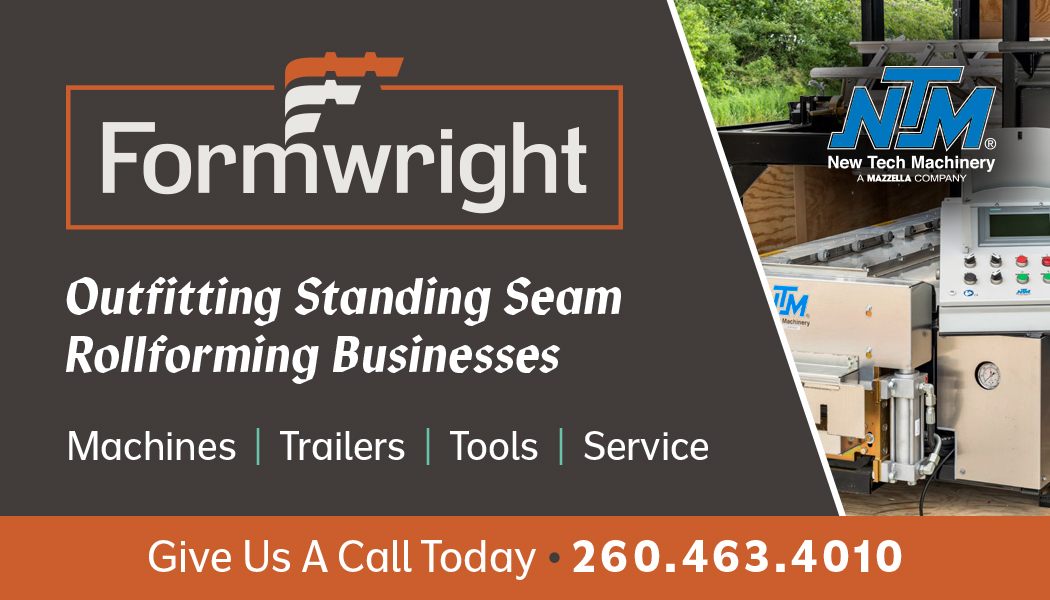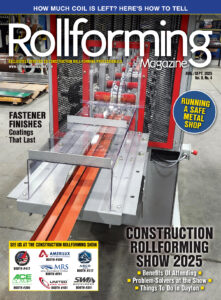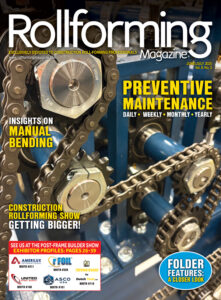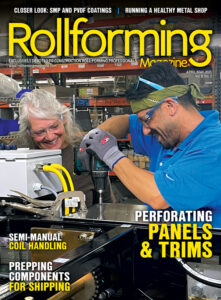In the June/July issue of Rollforming Magazine the article “Protecting Your Investments: Guard against coil damage with smarter storage and packaging methods,” the primary focus was on product damage control, but also mentioned were the time advantages of certain wrapping and storage methods.
With its racking system, for instance, Big Steel Rack [https://www.bigsteelrack.com] offers a solution for safely racking sheet coil so it doesn’t need to be stacked, unstacked and re-stacked. The system also frees up the labor needed to accomplish all those tasks, resulting in productivity advantages.
The article also included solutions from Ameripak [www.ameripak.net] which works to resolve “pain points” and “bottlenecks” with its orbital stretch wrapper. One particular bottleneck Robert Bowlin, Ameripak, has helped to resolve is the time-consuming process of wrapping standing seam panel. Bowlin noted that with a traditional method of packing, “the roll-forming machine comes to a halt and now the process of packaging holds up the machine from starting on the next run.
“In an average stack of panels that is 20 feet long, you’re probably going to have $15 or $20 cost with our wrapping materials,” Bowlin added. “With [traditional] wood crating, that number jumps to upward of $70 in materials, not to mention labor!”
Ameripak’s fully automated orbital stretch wrapper (they also sell a semi-automated system) is installed in line with the roll-forming machine so the stack of panels moves smoothly from the roll former through the wrapping process without additional labor. “You can package quickly and make the roll-forming machine immediately available to run the next batch of product,” said Bowlin.
A closer look at stretch wrappers
In furthering the discussion on productivity in the outbound systems, John Shirk, owner, Heartland Sales and Machine [ph: 574-223-6931] notes that many roll-forming shops use a cover sheet of metal to protect panel at the end of the line, but this has become a less-than-ideal practice these days with the price of steel. It’s fine if it’s a scratched panel with an unlikely future for selling, but many times an extra sheet will be run just for packing. “At the price of metal right now, you’re looking at $3.00 per foot or more,” Shirk noted.
Heartland is in the business of manufacturing roll-forming support equipment (tippers, uncoilers, conveyors, and more) for a variety of industries. One of its machines is a stretch wrapper for panel.
Shirk said in contrast to the $3.00 per foot for using a sheet of metal panel for protection, the price of shrink wrap is around 30 cents per foot. While the cost of the machine is not factored in, the machines pay for themselves over the long haul by cutting material cost and labor.
Heartland sells two types of wrappers: an entry-level machine, and a more powerful conveyor system. If you have a high-production facility, with 30 or 40 employees, a fully automated wrap line will typically save the cost of one employee wrapping panels.
Shirk said he is seeing more dual height machines in the panel-forming business which has increased the demand for hydraulic lift conveyors. They move up and down to meet either of the two decks, eliminating the need for a drop table or stacker.
Stackers have also decreased in demand at Heartland because the company’s fully automated wrapper with hydraulic lift runs about five inches below the roll-forming line and panels drop down to stack themselves.
While The Bradbury Co. does not offer a shrink wrap system, Ben Schmidt said orbital shrink wrappers not only help save an operator time, but avoids some of the common problems seen with manual stacking systems. “Not everybody’s customer base is accepting of shrink wrapping but they’re very efficient systems,” he said.
Part of why he likes them is because they control the panel drop. “If you ask the machine manufacturers’ opinion, we would like to see panels not drop more than 4-6 inches,” he said. He has seen manual stacking systems allow a fall of 12 inches to 18 inches, which he said can be damaging. “The lead of the panel may dig into the panel it’s dropping onto. The trail of the panel, dropping too far, can induce panel flare which compromises the lap.”
By Sharon Thatcher for Rollforming Magazine


